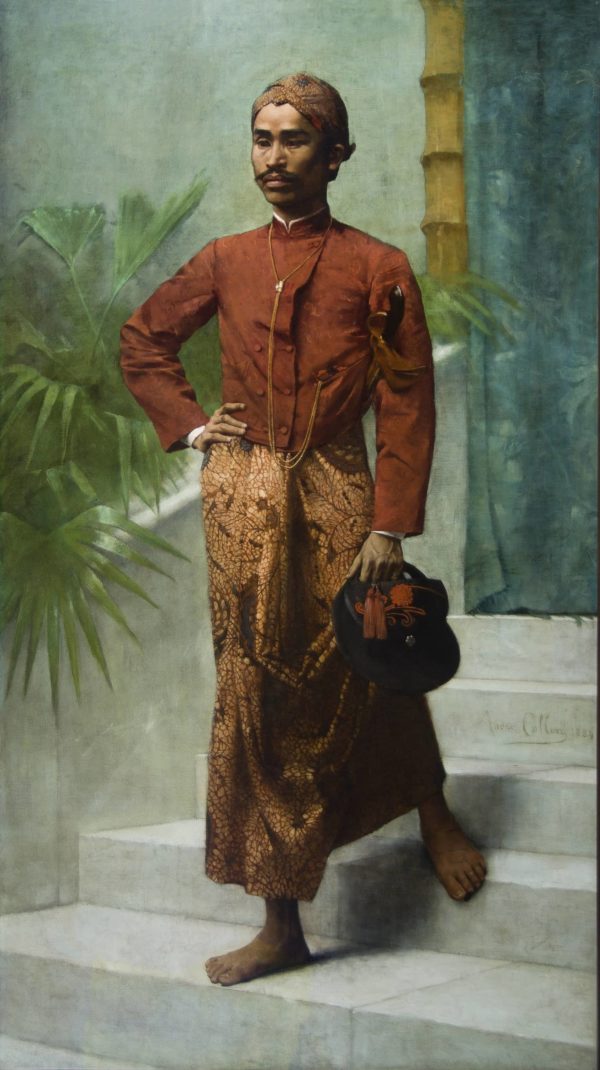Man from Java in Formal Dress, 1884
Oil on canvas, H. 2.2 m; W. 1.2 m
Signed and dated middle right: André Collin 1884
Provenance: Private collection
- Le Hardy de Beaulieu, “André Collin 1862-1930”, Aux Sources de la Lesse, 1999-2, p. 25, ill. 35.
Collin was trained at the Fine Arts Academy of Brussels under Jean-François Portaels, who was in turn a disciple of Navez who had brought to Belgium the teachings of David. After winning the Godecharle prize in 1884, Collin moved to Paris where he worked in the studios of Jules Lefèbvre and Gustave Boulanger, both of whom were successful painters and professors at the École des Beaux-Arts and the Académie Julian. Around 1886, he moved to Liège for a few years and then opened a large studio in Brussels. He became friendly with his patron Henri van Cutsem who invited to him to his property and bequeathed the Chateau of Ronfays to him. Collin lived there until 1918 when he moved to Menton for health reasons. He exhibited regularly at the Brussels salons. He left beautiful landscapes of Belgian Luxemburg and the Cote d’Azur, as well as interesting interior scenes and genre subjects.
Probably created during his time in Paris, our painting is typical of his early style. Both realistic and precise in the treatment of the figure’s formal costume, the work shows the scene’s diffuse light and shows great sensitivity to the rendering of the atmosphere. The young man is wearing a “sarong” which is tied at the front. This large piece of cloth was worn both by Indonesian women and men, who folded it and knotted it around their waist. His thick fitted shirt is typical of Java and is called a “beskap”. Generally dark in colour and without a pattern, the “beskap” was worn for ceremonies and important occasions. On his head, we can see a “blangkon”, the traditional headgear of Javanese men. He is also wearing a “kriss” a sword with a straight or curved blade, sharpened on both sides. Both an arm and a ritual object, the “kriss” was traditionally considered to have magical powers and was passed on from father to son. On Java and Bali, the “kriss” was worn on the back, as Collin has shown here.
